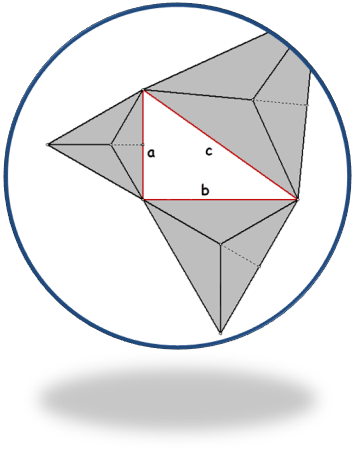
|  That's our irregular figure ... Dr. Wiggins' blog photo. We had hoped that Dr. Wiggins would accept being the face of 'irregular' as the compliment for which it was intended. After all, none of the 'regular' people answered our email about Problem 42b! It was easy enough to use a computer to make three of these figures in proportion; it was also easy enough to build them such that their bottom edges hold a Pythagorean relationship. But now ... how do we calculate the area of such a thing? None of our tables of area formulas included a listing for 'Wiggins Head.' None. An early suggestion was to use a string to find the perimeter of each figure and then translate that into an area; however, a set perimeter doesn't define a certain area. Another suggestion was to cut Dr. Wiggins into familiar and manageable shapes ... but that felt icky even typing it, let alone doing it!
Finally, Drew suggested that we relate each printed head's area to its mass. Without the availabity
of a scale capable of weighing paper accurately, we began constructing three right Wiggins prisms, as seen below.
Each right Wiggins prism had the same height; therefore, when we compared their volumes as related to
their weights, a constant height would put the comparison squarely on the base area. Sounds logical ... did it work?
|

|